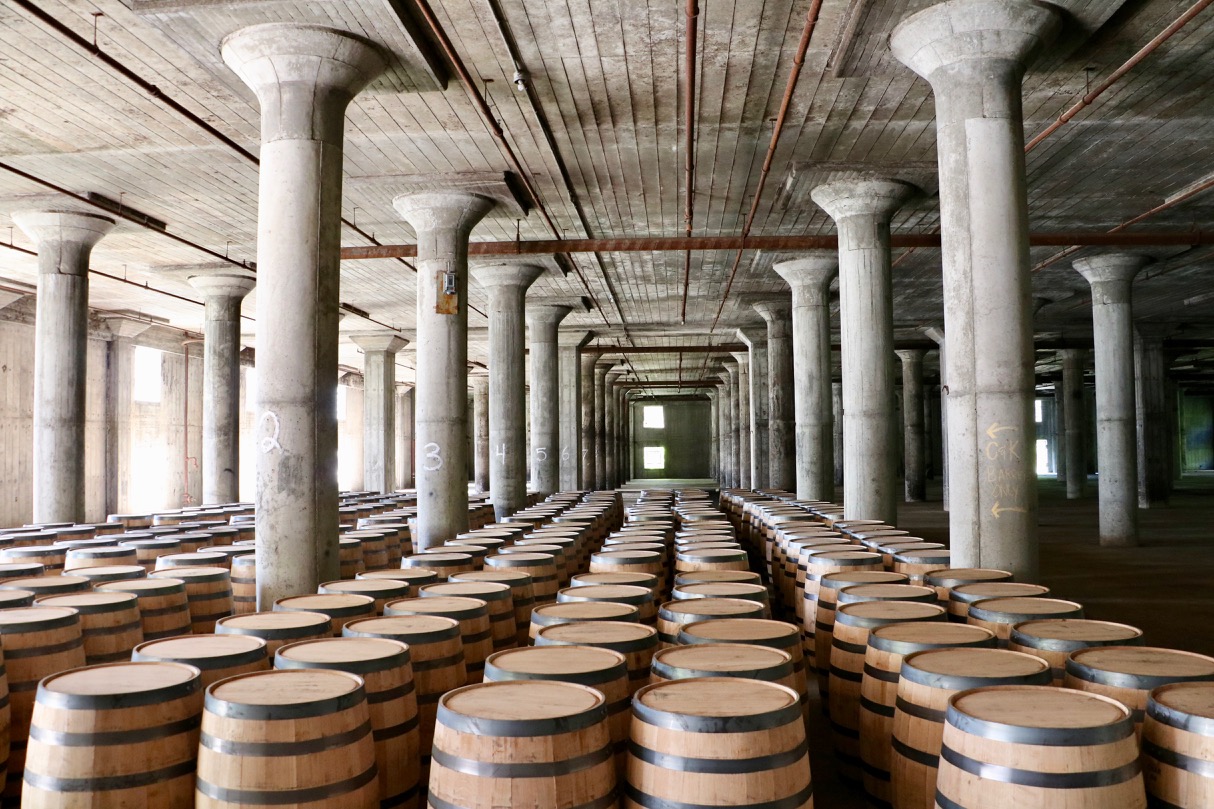Castle & Key Distillery Key Information - Mash bill, char levels, and whisky making philosophy
/Photos by Glenford Jameson
Castle & Key Distillery is located in the historic Old Taylor Distillery, within Woodford County, Kentucky. The distillery, not yet opened to the public, is destined to become a popular tourist attraction. It’s filled with once abandoned whisky warehouses, an old train station going back to the 1900s, and a traditional water spring house that’s reminiscent of the Roman era. (Pictured below)
The original property was the vision of Colonel E. H. Taylor Jr in the late 1800s. Inspired by European architecture, he wanted to make visiting the distillery an enriching experience. So committed to the cause, that fermentation and distillation took place within a castle he built on the property. It’s truly exceptional.
The distillery closed down 1972 by then operator Jim Beam. While a few guards walked the grounds, the property was left to natural vegetation—It’s a battle the distillery quickly lost, becoming overcome my a rapidly expanding Kentucky forest that had forty years to grow. It wasn’t until 2012 that the property was purchased, and the long restorative process began. The project is financed by Will Arvin (lawyer) and Wes Murray (finance and consulting). Early on in the project, Marianne Barnes was brought in as the Master Distillery. Marianne Barnes came from the Brown-Forman group, and was the heir-apparent to the Woodford Reserve Master Blender position.
You can learn much more about the property and Marianne Barnes by listening to an episode of The Whisky Topic Episode 94.
While the whisky made at the distillery can not yet be tasted, we know exactly the type of whisky being made.
Here are the crucial numbers: Whisky comes off the still at 135 (bourbon and rye), with a low 107 proof for barrel entry for bourbon and 118 proof for rye. The barrels are being charred at two different levels: char 3 and char 4. Marianne Barnes is leaning toward char 3 barrels used long-term, but she’s experimenting between the char levels currently. Most distilleries in Kentucky use the longer burn of char number 4, but char 3 is used by Maker’s Mark and some Buffalo Trace products (as well as others). The corn used is all white corn.
There are a total of three types of whisky recipes being used. The two bourbons both come with 73% corn, and a high 17% malted barley. As Marianne Barnes noted, “I really like the flavour it (malted barley) contributes. It has the sweetness and nuttiness that balances out the spiciness of the Kentucky rye.” The remainder 10% is either going to be rye or wheat depending on the batch. The rye adds the spice, and the wheat adds texture to the whisky and makes room for the flavour notes that come from the barrels. The third recipe is a rye, with 63% (mostly) Kentucky rye, 20% corn, and 17% malted barley.
To add variation into the process, Castle & Key uses two yeast strains when making whisky. The yeast used is seasonal, so the fall and winter distillation period uses a different yeast strain than the spring and summer. All fermentation occurs in open fermenters, so there's always a chance of wild yeast influences the whisky being made. The use of multiple yeast strains is pioneered by Jim Rutledge, formally of Four Roses Distillery. Jim Rutledge did consult on this project.
The core range of Castle & Key is expected to be Bottled in Bond, and four or five years aged. Distillation started in late 2016, so we have a bit of a wait before we taste the first official bourbon and ryes. However, Castle & Key is likely to become a tourist attraction and people are already reserving barrels of whisky today to be bottled when they’re ready.
Key facts:
Two Bourbon Whiskies:
Distilled to 135 Proof, Barreled at 107 proof
Traditional bourbon - 73% corn/17% malted barley/10% rye
Wheated bourbon - 73% corn/17% malted barley/10% wheat
Two different yeast strains
One Rye Whisky
Distilled to 135 Proof, barreled at 118 proof
63% rye/20% corn/17% malted barley
Two different yeast strains
All whisky released expected to be Bottled-in-Bond. That means it'll be at least four years old, distilled over the same season, and bottled with at least 50% ABV.










